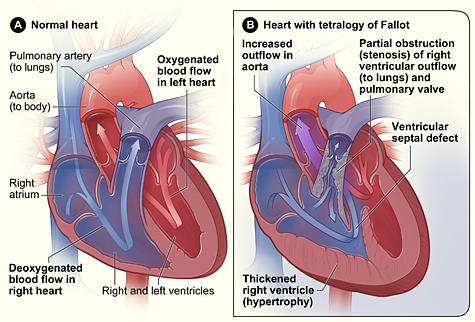
A congenital heart defect (CHD) is a structural problem with the heart that is present at birth. These defects can involve the walls of the heart, the valves of the heart, and the arteries and veins near the heart. They can disrupt the normal flow of blood through the heart, leading to a variety of symptoms and health issues.
The severity of congenital heart defects can vary greatly, from simple problems that cause no symptoms and may heal on their own, to complex abnormalities that require medical intervention soon after birth. Common types of congenital heart defects include:- Atrial Septal Defect (ASD) and Ventricular Septal Defect (VSD): Holes in the heart’s septum (the wall that separates the left and right sides of the heart).
- Patent Ductus Arteriosus (PDA): A duct between two major blood vessels leading from the heart that fails to close after birth.
- Tetralogy of Fallot: A complex heart defect that involves four different heart problems.
- Pulmonary Stenosis: Narrowing of the pulmonary valve, which reduces blood flow from the right ventricle to the pulmonary artery.
- Coarctation of the Aorta: A narrowing of the major artery (the aorta) that carries blood to the body, affecting the flow of blood to the lower part of the body.
